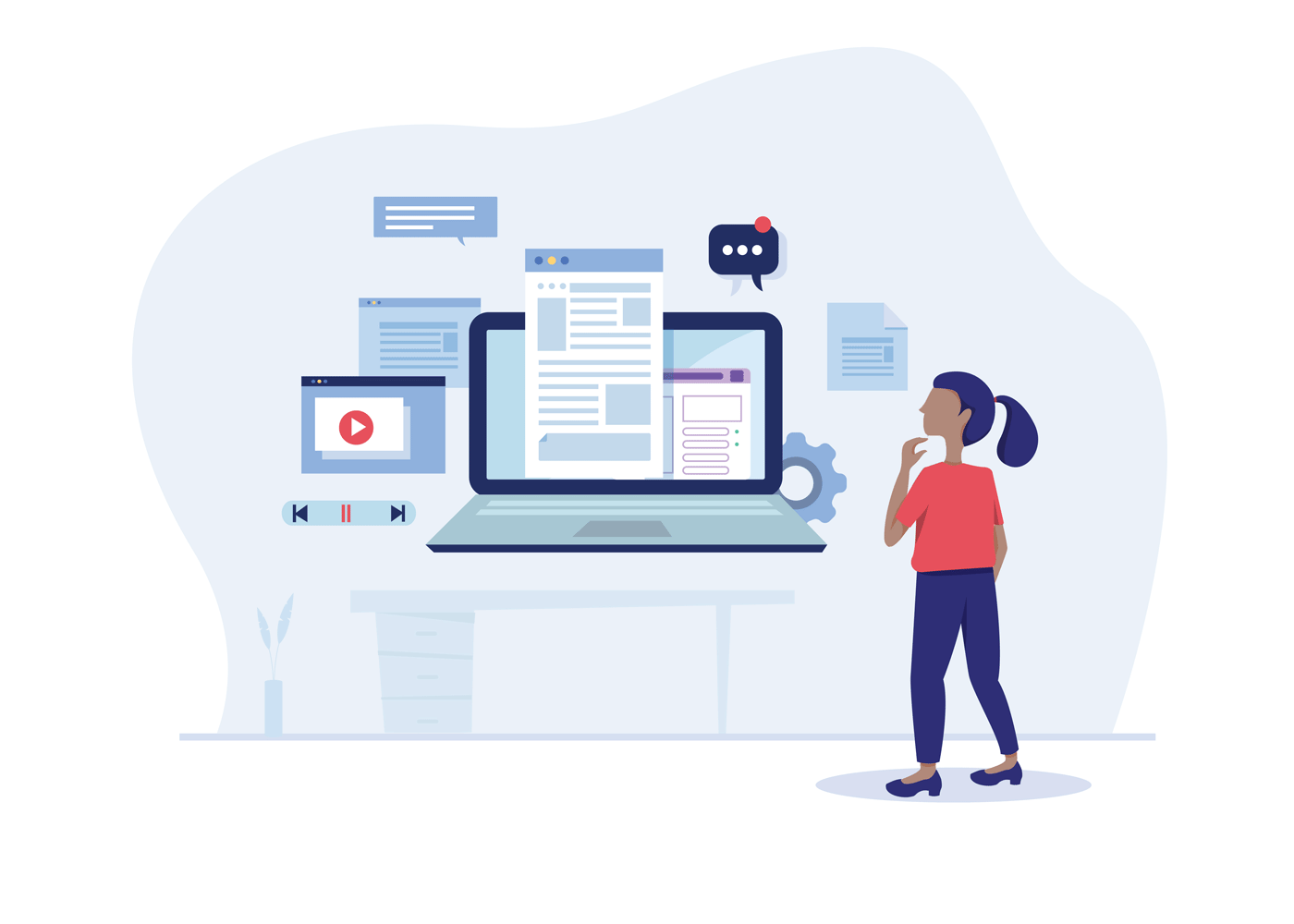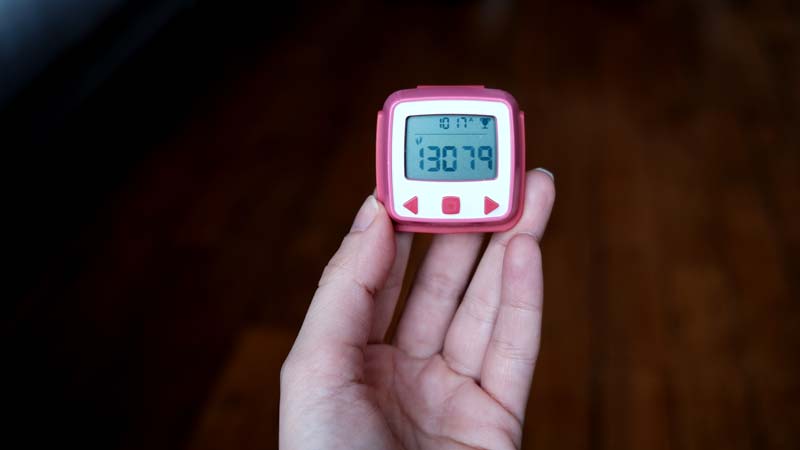You’ve started a digital detox. Now what?
Since the start of the month, I have been writing a series on “time thieves”: platforms, apps and digital devices that aim to grab and hold users’ attention for as long as possible – for their own financial benefit. From the “infinite scroll” of social media apps, to phones constantly pinging with new notifications and video streaming services that encourage binge watching by design. In case you missed this, here are the previous posts:
This week, I had intended to write about techniques I use to keep “time thieves” at bay on desktop computers. Thing is, I have received so much positive feedback from readers – YOU – who have been implementing my digital minimalism tips. I’m really touched to hear that my posts resonated with you and motivated you to take action. And I had a thought: the first few weeks of a digital detox / minimalism overhaul are incredibly hard. So I would like to share some advice about techniques that helped me to stick to a digital minimalist lifestyle – in a world saturated with distractions and temptations.
First of all, it’s absolutely normal to feel moody and out of balance when you’re cutting out digital distractions. You’re used to grabbing your phone to open up Facebook or Instagram and see what your friends are doing and suddenly, having deleted the app from your phone, you no longer have that option. It may feel frustrating. Well, it’s just like cutting out sugar: the first few weeks are the hardest. I know, because I cut out refined sugar from my diet in the summer of 2017: no more sweets, cookies, juices, sweeteners, honey or any kind of dessert for me. I remember that in the first 3 weeks of the experiment I was in the crankiest mood of my life. And then, after sticking to it for a month, I noticed a major change: more energy, both physical and mental, and a sudden, new clarity of mind. A happier, more stable mood, too. I mention this because my digital minimalism journey yielded very similar results: the beginning is the hardest, sticking to it is key, and rewards abound once you’re no longer under the spell of certain devices or tech platforms.
Here are the 3 key habits that I would recommend implementing to successfully stick to a digital detox or digital minimalism lifestyle.
1) Setting Goals and Tracking Progress
Ask yourself: why am I interested in a digital detox? What are the activities I could do or goals I could achieve if I spend less time using my smartphone? Visualizing the benefits and rewards of a digital detox / minimalism overhaul are key for sticking to the plan. In the wise words of my friend J.K. Hoey, “Where are you headed? I don’t know many people who take road trips without a map or a plan.”
In my case, I had two goals: to read more books and be more physically active. Thing is, setting goals is easy. To be truly successful at digital minimalism, you need a plan and a tracking system to follow your progress.
For my books goal, I decided to use the website Goodreads to keep track of the books I was reading (and intend to read in the future). Goodreads runs a reading challenge every year: users can enter the number of books they wish to read and Goodreads will tell them, during the year, how they are doing and if they are on track to meet their goal. This year the challenge has over 4 million participants, who have pledged an average of 63 books (!!!). According to The Atlantic, “In 2018, only 16 percent of participants in the Goodreads Reading Challenge actually completed it, finishing 21 percent of the total books pledged.” Last year I didn’t meet my goal of reading 30 books (I only read 21), but this year I have already met my more modest goal of 28 books. I achieved it this week, with 5 more weeks to go.
In terms of my physical activity challenge, I had noticed how my main job – editing films – is not conducive to a very healthy lifestyle, as it is very sedentary. Inspired by my dad, who walks an average of 17,000 steps a day (yes, I know!), I decided to buy a pedometer to keep track of my steps. I was horrified to learn from my iPhone that in 2018 I walked an average of 5,500 steps a day. Now, why a pedometer you may ask, when smartphones automatically log steps? For two reasons. First, I don’t like to have a phone next to my body all day long because of radio frequency exposure. Call me old fashioned and extremely cautious, but I’d like to limit my exposure to RF energy. The second, most important reason for an old fashioned pedometer, is that it displays the steps on its screen, so when you are curious to check out how much you’ve walked, you don’t have to grab your phone and open an app – leading you to be potentially sucked in and distracted by other apps on the device. My old-fashioned, cheap pedometer displays the time and a little trophy icon every time I hit 10,000 steps. It has become an essential accessory for me.
2) Identify Your Habit Loop
In order to create new habits – conducive to digital minimalism – it’s essential to understand how habits work. I learned a lot from Charles Duhigg’s book The Power of Habit. On his website, Duhigg summarizes his findings this way:
The MIT researchers in Chapter One discovered a simple neurological loop at the core of every habit, a loop that consists of three parts: A cue, a routine and a reward. To understand your own habits, you need to identify the components of your loops. Once you have diagnosed the habit loop of a particular behavior, you can look for ways to supplant old vices with new routines.
In the book, Duhigg explains further:
First, there is a cue, a trigger that tells your brain to go into automatic mode and which habit to use. Then there is the routine, which can be physical or mental or emotional. Finally, there is a reward, which helps your brain figure out if this particular loop is worth remembering for the future. Over time, this loop – cue, routine, reward; cue, routine, reward – becomes more and more automatic. The cue and reward become intertwined until a powerful sense of anticipation and craving emerges. Eventually […] a habit is born.
In my case, I noticed that I used to grab my phone to check Twitter whenever I was feeling lonely. On days when I was out filming with a crew, or in meetings, I would never grab my phone to check Twitter. A feeling of loneliness, when sitting at my desk editing, was definitely the CUE that lead me to the ROUTINE of opening Twitter and posting a message or replying to messages by my friends. The REWARD: socialization (albeit a digital form of it). Feeling part of a community and corresponding with friends was the true reward of this habit loop. So, in order to change my habit and spend less time on Twitter, all I had to do was to change my ROUTINE when the familiar cue – a feeling of loneliness – arose. Now I try to set up meetings with friends every day. Or, when I am feeling that loneliness cue, I send a text message or an email to a friend. If it’s evening, I may pick up the phone and call them, or call my family. This new habit loop, with a routine of checking in with loved ones individually, feels so much more rewarding than posting a new tweet or checking my Twitter stream. It also helps that I don’t have the Twitter app installed on my phone anymore, so I can only check Twitter on my computer, by entering username, password and 2 factor authentication code every time – like I have explained in last week’s post. This way, it’s very hard for me to be tempted to fall back into the old routine.
If you have a digital habit you’d like to change, what is your habit loop? Can you identify a cue, routine and reward? And which healthier routine would you like to implement?
3) Find new pleasurable hobbies – away from screens
In addition to reading, walking, seeing friends, I also started to seek out activities away from screens in order to solidify my new digital minimalism lifestyle. Photography is one activity that invariably brings me joy… but it is ultimately tied to reviewing photos on a screen. So I looked for another hobby that is 100% screen-free: LEGOs.
When I was a kid, I used to play with LEGOs for hours every day. My neighbors – 4 girls that were around the same age as me – would come over to my grandmother’s house and we would build entire villages together. It was pure bliss. Towards the end of elementary school, I remember being very sad because I felt I couldn’t play with LEGOs anymore – it was something that only children did. Well, I got sucked back into the LEGO universe when the Women at NASA set was released… And then my husband bought me a LEGO Cinema as a Christmas present. I was hooked – again – and completely shameless about it.
Last Christmas, I created elaborate LEGO “vignettes” for every member of my extended family. On my desk, I made similar vignettes about me and my work, visualizing some of my goals. Like being a cinematographer in an all women film crew:

I also made several LEGO “homes” for my digital devices, to stow them away. And this past month I’ve created pen holders and highlighter holders with LEGOs:

Recently, my mother-in-law called my husband and I could overhear their conversation. My husband: “Yes, Elena is doing well, she’s playing with LEGOs right now.” It made me laugh out loud. But again, I have absolutely no shame about it. I love that LEGO boxes now say: ages “4-99” (honestly, they should just say ages 4 and up).
What about you, what are some hobbies you enjoy away from screens? If you are looking for inspiration, the /nosurf community on Reddit has plenty of advice in this post: “The NoSurf Activity List is now live: awesome ways to spend your time instead of mindless surfing.”





